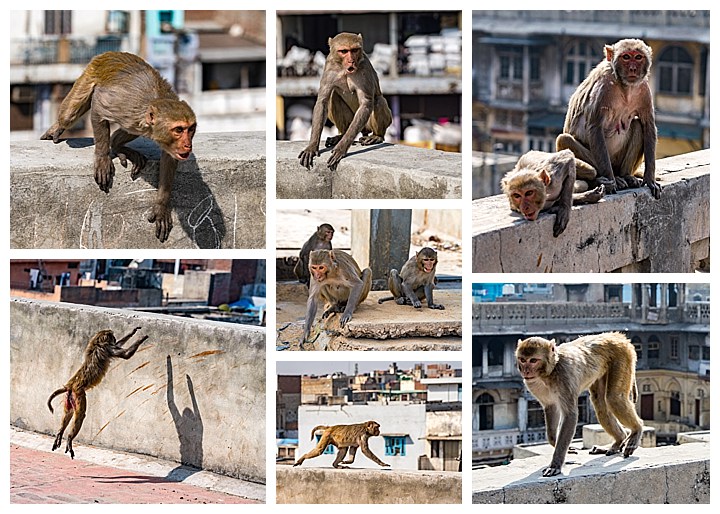
India was described to us by one of our guides as a Land of Extremes. From the very wealthy to the very poor, love it or hate it, cutting edge technology to villages which have stood still in time. Vibrant colors stands out from gray dust, food may be extremely spicy or bland. You may find a quiet corner, or be blasted with the continuous sound of honking cars. Extreme smog in the cities vs. clean air in more remote areas. Plus, there is a severe reduction of a westerner’s sense of private space. At 1.3 billion population, India has extreme polarities for every aspect of their life.
We landed in New Delhi and went out on the street to explore street foods with a guide. Near the University of Delhi were student hole-in-the wall cafes and eateries which only the locals know about. Popular chai (tea) spots hidden in narrow alleys plus places where local fried food is made and cooked in outdoor kitchens. The tour guide claimed that all the local spots had been tested for safety, yet our stomachs did not always agree.
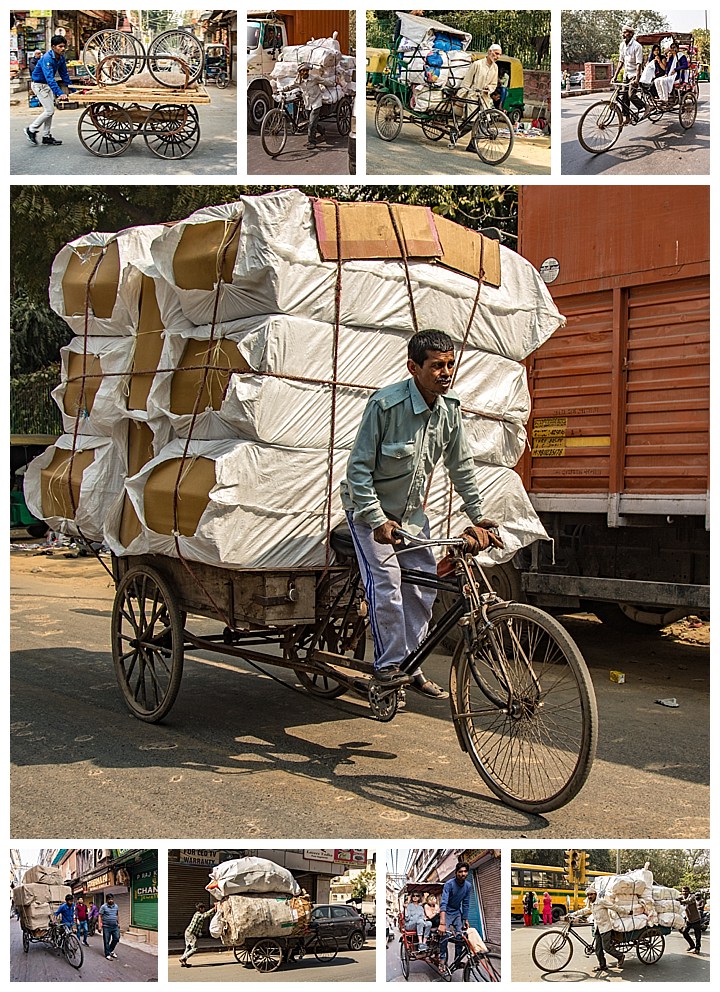
Much as in Cuba (our most recent trip), pedal power was a very common mode of transportation, both for people and goods. Single gear bicycles were everywhere you turned, often piled high with goods, making the cart so heavy that we knew we would not have been able to move it, let alone transport it for long distances.
Within the city of Delhi, English was very widely spoken, though not universal. (We later found that English was almost totally absent in some of the smaller villages.) Even when someone spoke to us in English though, we often had a hard time understanding them. Their accent is so thick that it takes some tuning of the ear before we could figure out what was being said. It gave us a new appreciation for why Ecuadorians have trouble understanding our attempts at Spanish — even if we say the right words, our accent in Spanish gives Ecuadorians the same trouble we have here in Delhi.
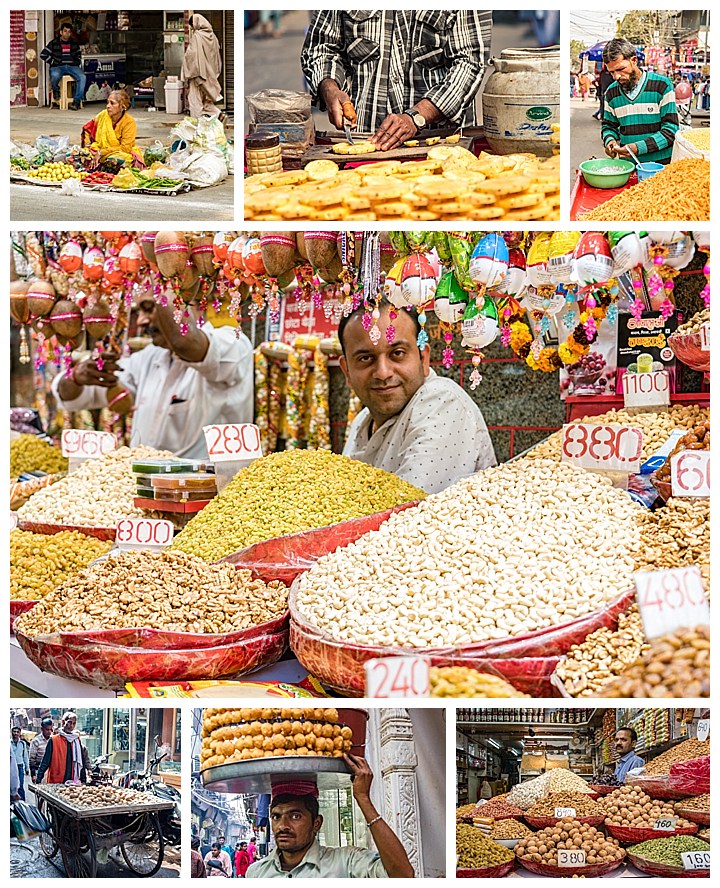
The spice market was incredible. As soon as we got near the entry to this market, the aromas were so powerful that we both started sneezing. The vendors were active, and we finally wandered to the roof area to see the panoramas and witness the trading below. The volume of commerce could be seen from this vantage point, as we looked down on the loads carried on bicycle rickshaws.
Earlier, we had wondered why there were so many fenced balconies and we soon saw why when we got to the roof… monkeys. They were grouped into tribes, and we were warned not to get bitten (rabies). One monkey grabbed my camera lens, and another monkey wrapped its arms around Evelyn’s leg (monkeys in top image block).
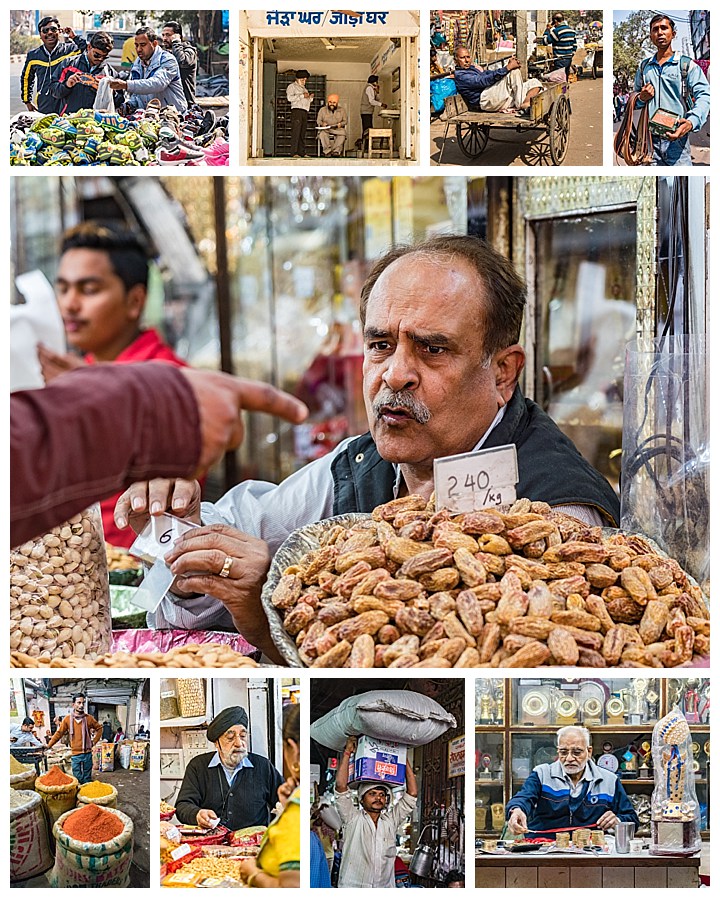
Merchants were busy everywhere, as business here was frenetic all day long. Even the occasional vendor taking a break, did not leave his cart (top row, 3rd image).
We have experienced aggressive vendors wherever we’ve traveled. However the ones in Delhi were extreme, sometimes following us for blocks. When we did business with people on the streets, it soon became apparent that dishonesty should be assumed in every transaction, and within a single day had three different vendors try to overtly cheat. It was sad how quickly I shifted to the mode of assuming whoever I was talking to was dishonest. (Later, in the South, we heard many Indians say that was one reason they disliked Delhi.)
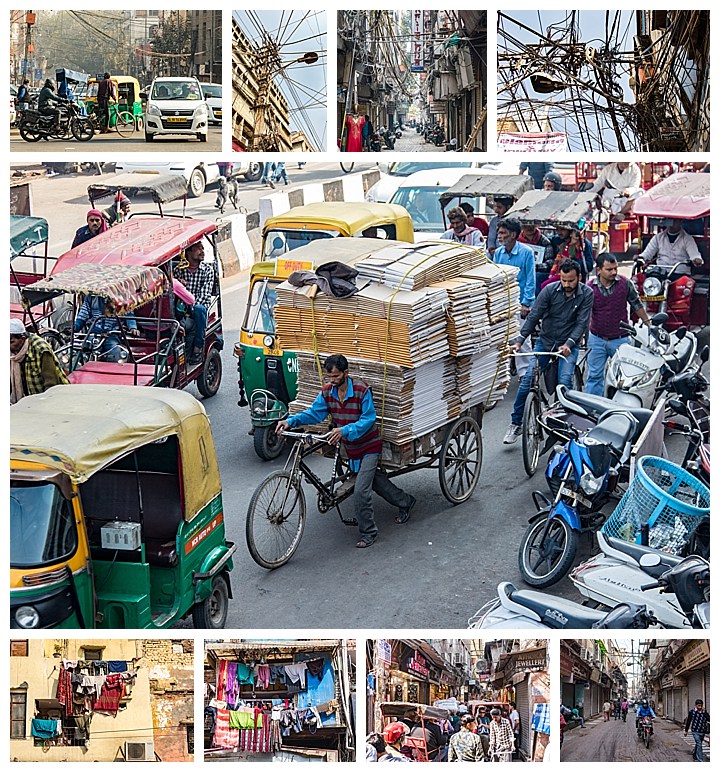
Traffic in Delhi was chaotic. At times, there were 8 lanes of traffic on only 3 marked lanes. Tuk tuks, motor scooters, pedestrians, cars, trucks, cows, all merging in and out of lanes to push a foot further, even though there was no space. There was no sense or order, to move everyone along. Rather, the entire mentality was “every man for himself,” which we saw even more strongly in coming days.
The extreme level of traffic from cars with no pollution controls, combined with the coal burning electrical plants, and the habit of burning trash on the side of the road, all resulted in the worst air quality of any major city in the world. WHO says that anything over 80 ppm particulate matter in the air is unhealthy, yet Delhi reached 999 ppm in November, 2017. Though I do not know the measurement for the days we were there, everything was hazy, and even buildings a block away could not be seen clearly.
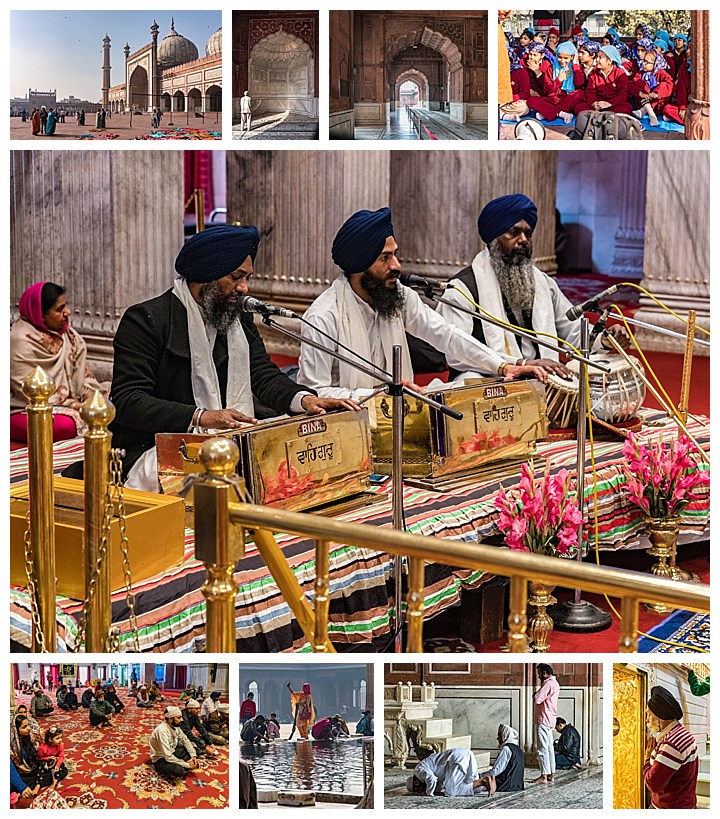
We visited the Sri Digambar Jain Lal Mandir temple downtown. This is one of the oldest temples in the area, founded in 1658.
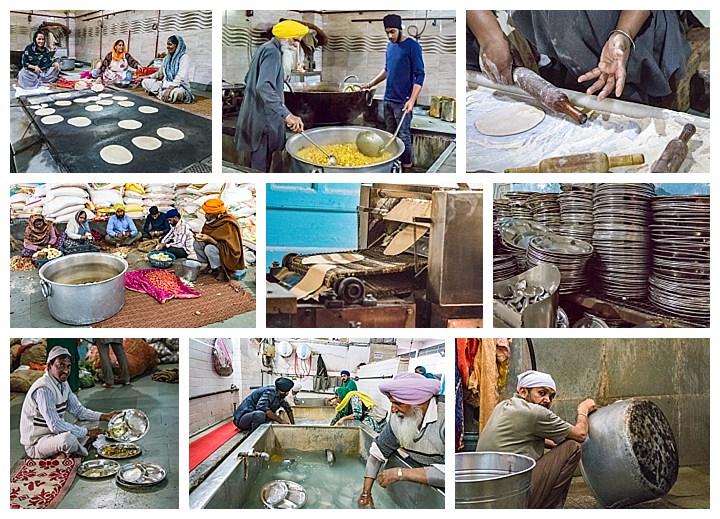
The temple provides extremely cheap living for those visiting to pray, plus they feed a meal to anyone who asks. We walked into their kitchen area to watch how they prepare the meals, as well as how they clean up (middle-right plus entire bottom row). It was a pleasant change to see them using metal plates and utensils, and recycling everything possible. (Outside the temple, everything was single-use plastic, that was usually just thrown in the gutters when finished.)
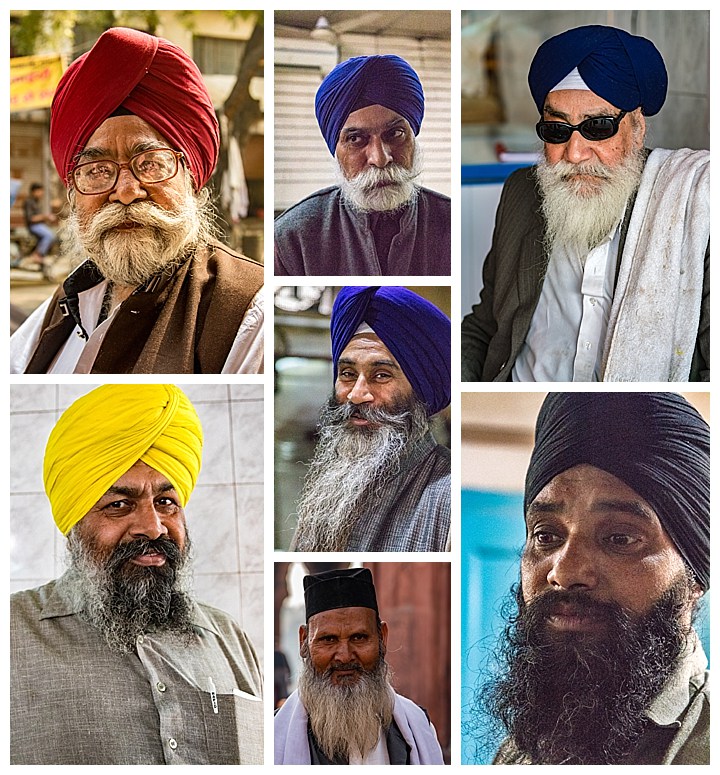
Delhi was rich with photographic subject matter. Sikhs are immediately recognizable from the turbans they wore, and everyone was willing to pose for our cameras.
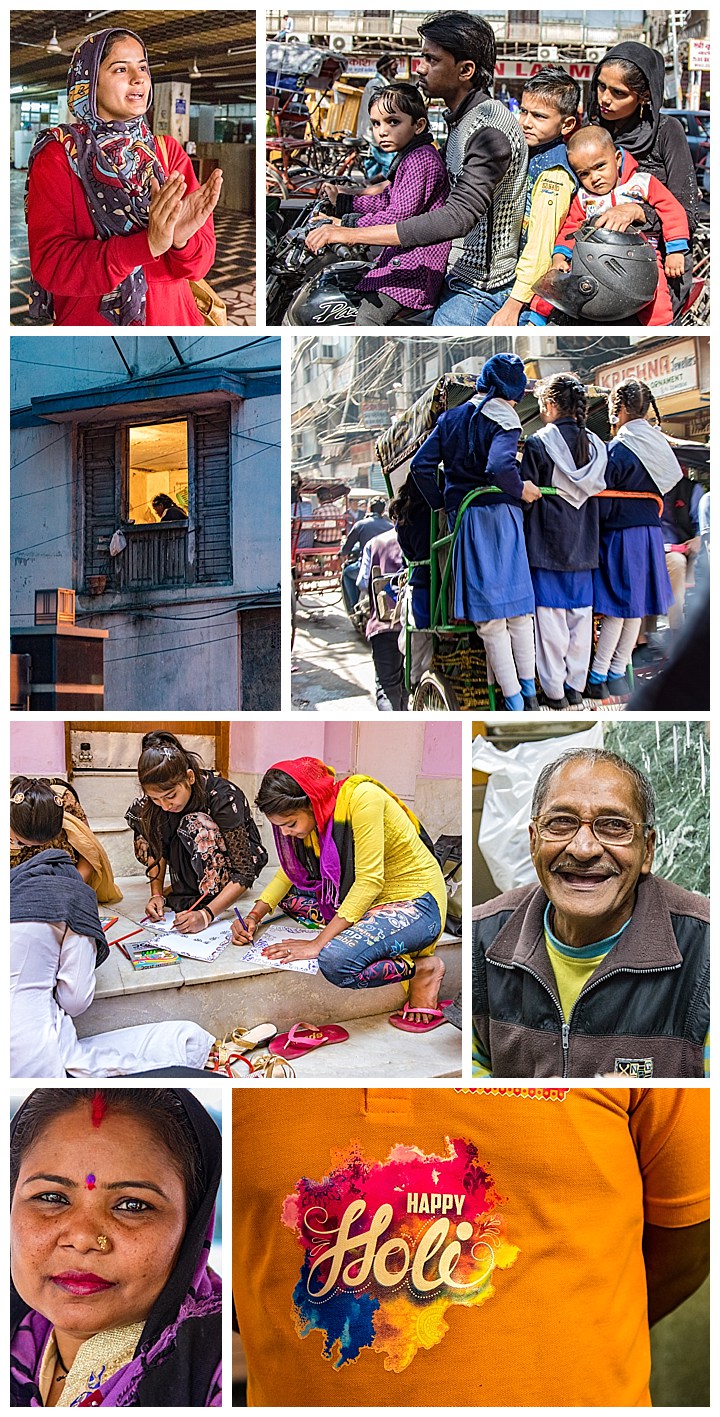
New Dehli was the start of our adventure to explore various festivals in India. We are here at this time of year primarily to experience the true Holi Festival.